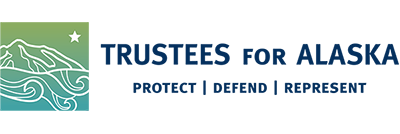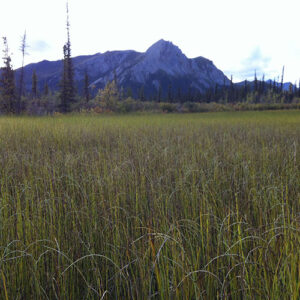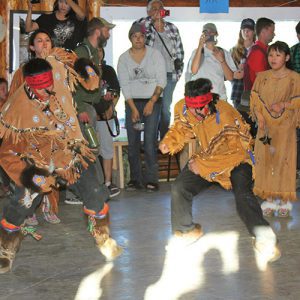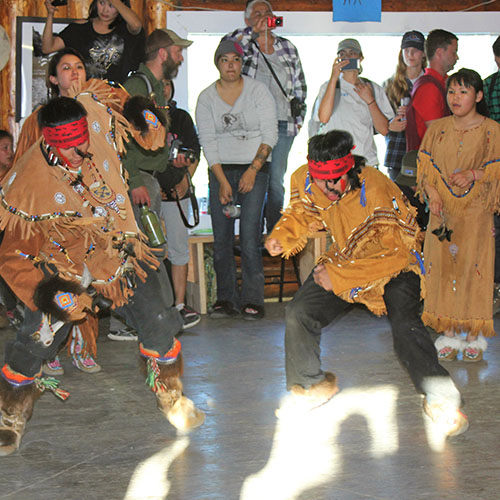
Trump administration targets Arctic Refuge again
The Trump administration has once again targeted the Arctic National Wildlife Refuge for oil, this time skirting the law by pushing for seismic exploration on the 1.5-million-acre Coastal Plain. The action comes on the coattails of a congressional effort to use the budget process to allow drilling in the Refuge. The Arctic Refuge drilling agenda threatens public lands, wildlife and Arctic communities.
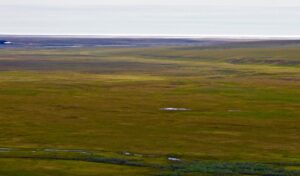
The Coastal Plain extends from the foothills of the Brooks Range to the Arctic Ocean. Photo courtesy of Vance Carruth.
A Washington Post story revealed this week that a Department of Interior memo from August instructs the U.S. Fish and Wildlife Service to revise regulations that have been in place for three decades.
Authorizing exploration within the Coastal Plain would be illegal without Congressional action.
ANILCA prohibits seismic testing
Interior’s directive to FWS defies the intent of the Alaska National Interest Lands Conservation Act (ANILCA). It also reveals how readily this administration will make backroom deals with powerful and wealthy interests, disregarding decades of legal precedent, and act contrary to public will.
In fact, ANILCA allowed a one-time exploration program on the Coastal Plain in the mid-1980s. The legal authority to do seismic exploration then expired when the Interior submitted a report to Congress in 1987. ANILCA does not allow any more seismic exploration.
And Interior cannot adopt a regulation that is inconsistent with the statute.
Interior should know better
Interior has held the position that seismic exploration after 1987 is prohibited by ANILCA for 35 years. Both Democratic and Republican administrations adhered to this position.
The State of Alaska went to court four years ago to argue against that policy—and lost. Instead, the U.S. District Court confirmed that the Arctic Refuge is off limits to oil and gas exploration in 2015.
The value of the Arctic Refuge goes beyond corporate dollars
Unfortunately, some interests imagine dollar signs and refuse to recognize the real harm done when development diminishes the health of wilderness and wildlife.
The 19-million-acre Arctic Refuge is one of the largest intact ecosystems in the world. It provides vital habitat for muskoxen, caribou, brown bears, foxes, and hundreds of species of migratory birds from across the globe.
The Coastal Plain safeguards the most critical on-shore denning areas for polar bears in the United States. It also provides the calving ground for the Porcupine Caribou herd, a culturally important food source to the Gwich’in people.
Americans know the value of the wild and consistently say they want to preserve it in the Refuge.
The Gwich’in bring it home
The Gwich’in people have fought congressional proposals that threaten the Coastal Plain for decades. That is because the Gwich’in rely on the Porcupine Caribou Herd, which in turn relies on the Coastal Plain as a nursery for pregnant and newly born caribou.
Bernadette Dementieff, executive director of the Gwich’in Steering Committee, made it clear in a statement this week that the fight will continue. Harm to the Coastal Plain is harm to the Gwich’in.
“For us, protecting this place is a matter of physical, spiritual and cultural survival,” she wrote. “It is our basic human right to continue to feed our families and practice our traditional way of life. Oil exploration in the Arctic Refuge’s coastal plain would be a human rights violation. Our identity is not negotiable.”
Learn more, act now
Find out more about how drilling threatens the birthing and nesting grounds for caribou and birds, and the subsistence foods for the people who live in the region—and learn how climate change puts the Arctic region in peril, even as fossil fuels add to the impact.
Most important, act now to protect the Arctic Refuge by signing these petitions:


